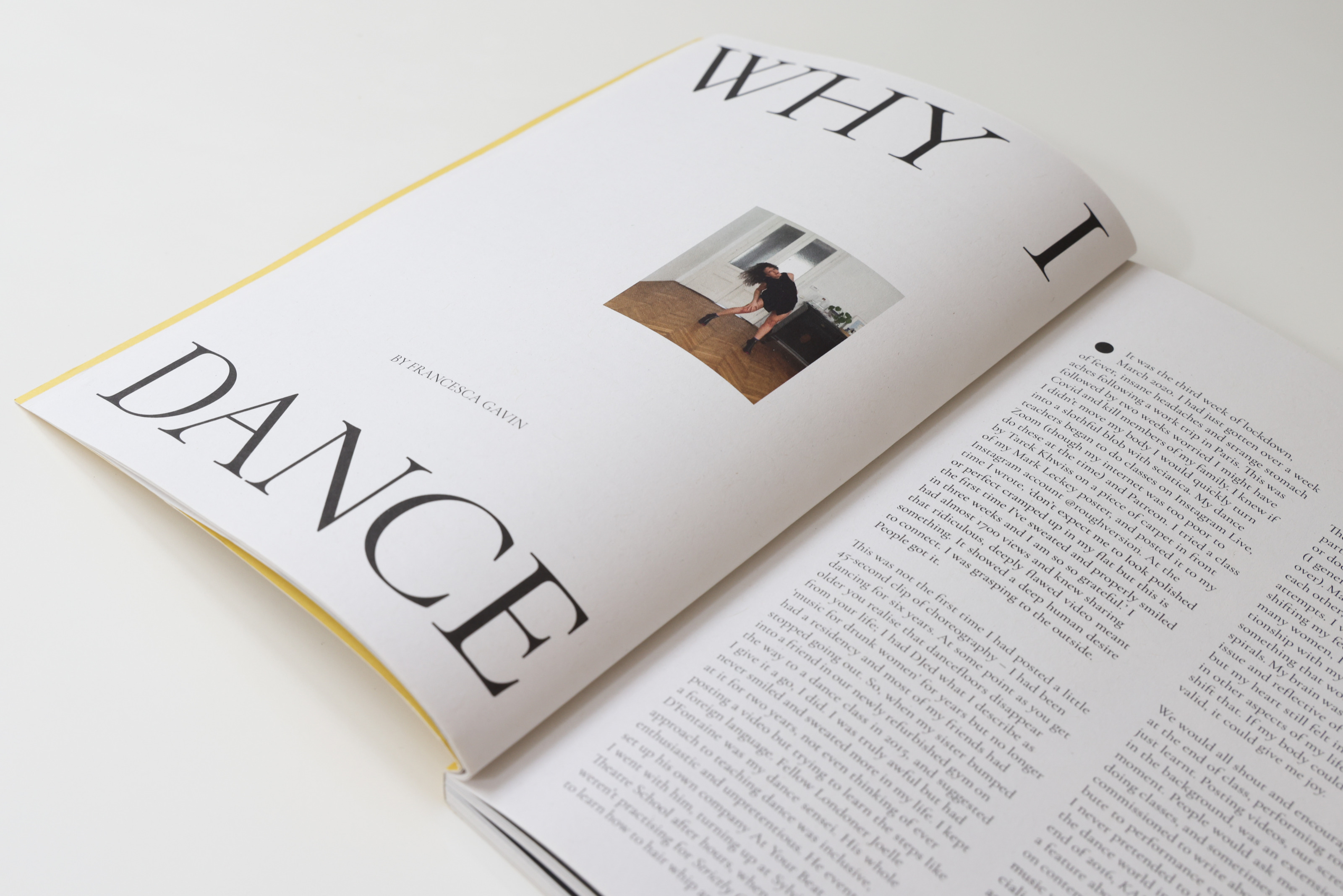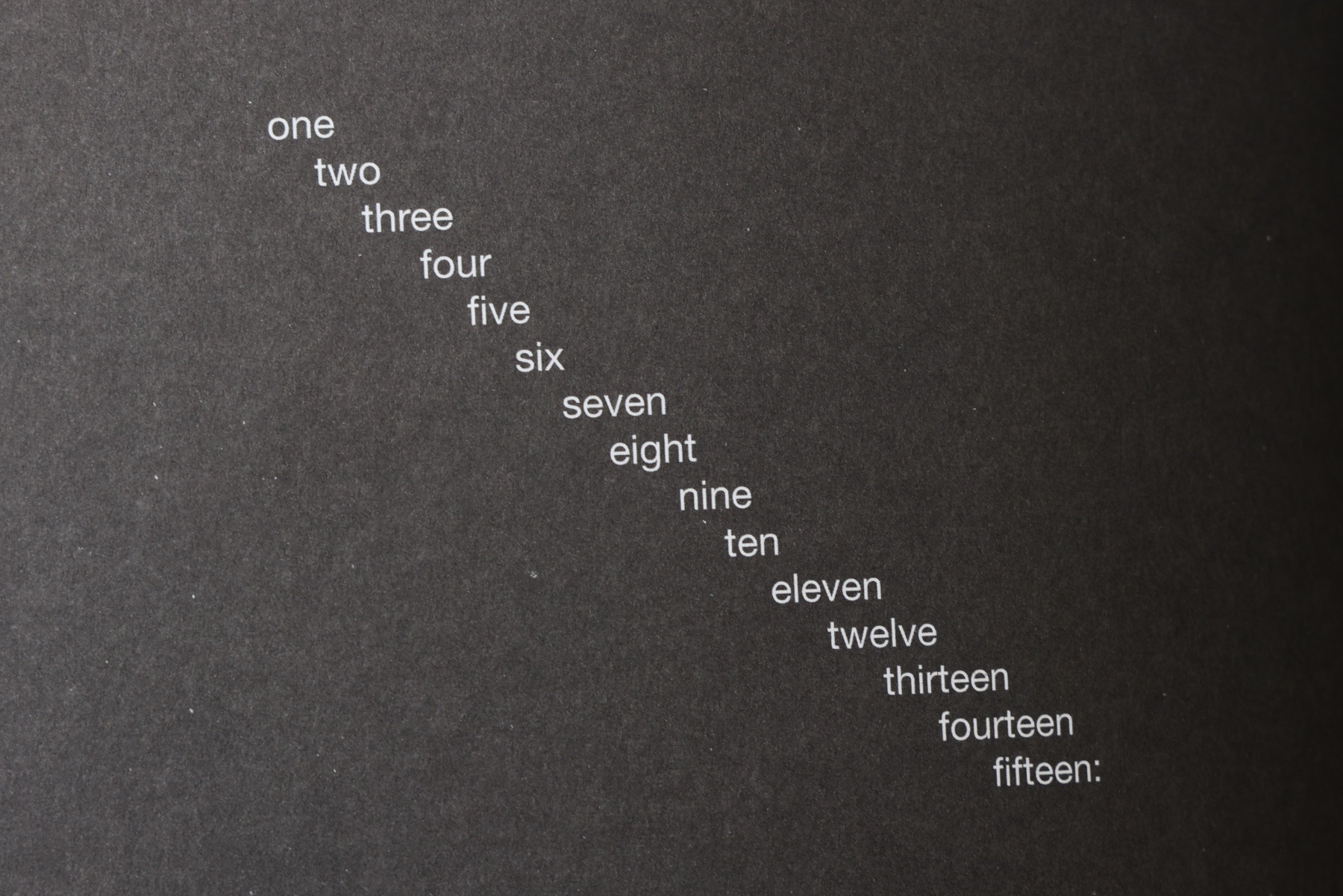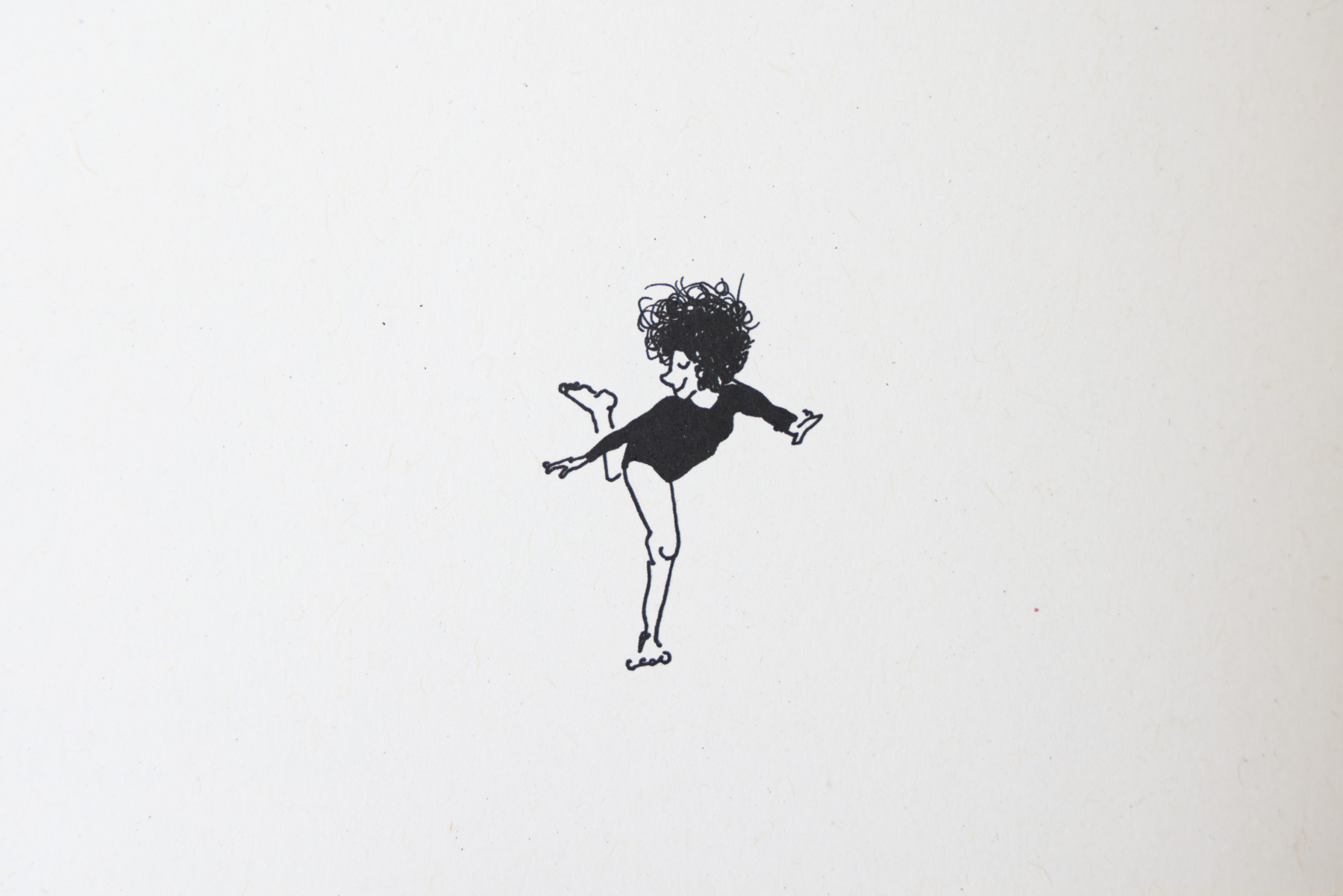We spoke with the founders of motor dance journal about capturing the ephemerality of dance in print, and the potential that lies behind dancing on your own.
Isabelle Bucklow and Hannah Woods met while studying History of Art in London. Their shared passion and fondness for performance quickly formed a strong creative relationship—they read each other’s essays, recommended books to each other, and attended exhibitions together. These exchanges nurtured their shared love of dance and writing, and ultimately led them to question why they couldn’t find more about dance in print.
There can be a seeming contradiction between the fixedness of printed matter and the moving body. However, in this tension, Isabelle and Hannah found fertile ground to explore and expand on both art forms. Inspired by the experimental writing style of dance critic Jill Johnston, and the writing practices of many of their favorite performers (such as Yvonne Rainer, Adrian Piper, and Mariana Valencia) the two writers began motor dance journal in 2021. The three part journal is rooted in the dialogue between printed matter and dance, a relationship that comes to life while flipping through its pages. The immobility of the images and photographs of moving bodies become animated, while the carefully written text gives the reader a sense of stability.

-
How was the idea of motor dance journal born?
We’d formed an interest in dance by extension of our shared study of History of Art but struggled to find as much written on this art form as others. Dance certainly hasn’t been integrated into the art historical canon (which isn’t necessarily a bad thing!). This also seemed the case in printed matter: Whilst there are plenty of publications for the literature, art, or film enthusiast to choose from, there is very little for someone looking to get to know dance. It seems most dance journals exist predominantly for niche circles of academics, ‘experts’, or dance professionals. We wanted to change this and make dance accessible to a general public who may have never considered dance critically or as an art form, they can partake in—be that through writing, practice, or as an audience.
“We wanted to […] make dance accessible to a general public who may have never considered dance critically or as an art form”
-
What have been some of the challenges of translating dance and movement into printed matter?
Dance is often deemed an ephemeral act that resists being captured in words. The stage and page have very different affordances, but this has led our contributors to generate material of such brilliant variety. Print media also allows a diversity of ideas to be gathered and interact with one another and be distributed in spaces beyond the institution or the dance space (be that a theatre or gallery), supporting our aim to grant wide access to these conversations.
motor is committed to exploring the choreographic potentiality of printed matter, as well as the performance of writing about dance. Print isn’t necessarily static in opposition to dance which is mobile, and we worked with the brilliant designer Audrey Solomon to activate the pages of motor and make a dynamic reading experience. For example, for the piece by Movement///Possession, the script is printed at different angles—asking the reader to physically rotate the magazine and participate in a dance of sorts as they read.

-
In the world of magazines, the name of the journal motor could be easily associated with a car magazine. How did you come up with the name?
Yeah, we quite like that disruption of expectations. The name motor actually comes from a couple of different sources: from Watermotor—a dance made in 1978 by Trisha Brown (filmed by Babette Mangolte), which is a really phenomenal work that we both love. And a quote from the great Isadora Duncan (a pioneer of modern dance) who declared that before going on stage: “I must place a motor in my soul”. Also the idea of motor neurons (cell bodies connected to the motor cortex, brainstem, or the spinal cord, which transmit impulses to control muscle movements)…So, motor felt like a really apt title. We like that it is intrinsically linked to dance but also kind of elusive and ambiguous.
-
In your first issue, The Solo, you tackle what it means to dance alone. Do you think there is social power in dancing on your own?
When we first conceived of this project in 2020, the theme of the solo felt like a really resonant and personal way to begin our inquiry into dance. In that not-so-distant past, the world was in lockdown and we, and many others, had no choice but to dance alone in our bedrooms. During this time, we became increasingly aware of the intimate nuances of our individual bodies moving in and through space, a novelty compared to the usual (but equally ecstatic) crush of bodies that we so often experienced in London. We were really missing seeing live performances and started to think about all the solo dance performances we had seen together. We realized the power that even just one performer could hold, and so we wanted to explore this potential further.
We certainly think ‘the solo’ can have social power. The contributions demonstrate the solo’s capacity to summon so many emotions—loss, joy, healing, frustration, anticipation —and extend beyond the individual body into environment, image, and language. In the issue, our contributors have explored the power of the solo body to encompass multitudes, solicit encounters, and connect with archives.

-
Could you describe your personal relationship with dancing?
We love to dance! But we aren’t professional dancers. We definitely think being a dancer isn’t a prerequisite for an interest in dance, and that’s why we wanted motor to explore movement practice in an expanded sense; not just on a stage or gallery but as it is practiced in everyday life—issue number 1 really tries to capture that range, featuring pieces that consider the likes of cruising or paparazzi shots of Brittany Murphy outside a ballet class.
That being said, we do like to dance when we have the opportunity. Usually, this is in our bedrooms or at parties! Last month though we were invited to Baden-Baden for the European premiere of Yvonne Rainer’s HELLZAPOPPIN’ and we attended a workshop with choreographer Pat Catterson, one of the custodians of Yvonne Rainer’s Trio A. Pat talked us through the dance and, ever so patiently, spent a couple of hours walking us through the steps. We feel very lucky to have had this experience.
“We wanted motor to explore movement practice in an expanded sense; not just on a stage or gallery but as it is practiced in everyday life”

-
Dance can be such a vast topic, with so many different points of view. Could you walk us through the process of curating this issue?
We were very certain from the start that we wanted to show a breadth of approaches and responses to dance; this was part of our key desire to create something accessible to a wider audience. We wanted to demonstrate that dance can be for non-dancers (reflective of our own non-traditional entry point into dance), and really get at the radical expansiveness of the form, showing a variety of viewpoints and approaches. Not wanting to promote an academic treatment of dance, or restrict our remit to dance ‘professionals’, we reached out to writers, curators, artists, choreographers, and those who were simply interested in dance, asking them to consider ‘the solo’.
motor will be a trilogy, with issue 2 addressing Duets/Dialogues. We tested out these categories in a conference that we hosted at UCL back in June 2021, asking contributors to consider the themes as categories to be interrogated. Whilst the themes are broad and permit a real diversity of responses and approaches, the idea of keeping motor as a trilogy encouraged us to be more specific and ambitious in our commissioning. There were definitely people who we immediately thought of as soloists (Gillian Wearing on dancing alone in Peckham, Breanna O’Mara’s solos in Tanztheater Wuppertal Pina Bausch, the contemporary choreography of Shade Théret), and then others who really expanded what a solo body could be. The three themes definitely give motor a feeling of curation rather than something that spills out and goes on and on. We also wanted the magazine to be a limited and collectible item.
-
What would you say is the importance of connecting dance with other spheres of creativity?
We’ve spoken about connecting dance with writing and publications but it’s also worth mentioning the array of other amazing creatives involved in the project. We’ve worked with visual artists, photographers, poets, and musicians. We definitely believe that it’s important to celebrate interdisciplinarity when thinking about dance. Dance is often conceived as a separate art form that is accompanied by a lot of preconceived ideas about who can practice it or have an opinion on it. We wanted to show that it is something that can be part of our everyday life, enriching our understanding of social relationships and experiences of the environment. So motor is not only about connecting dance with other creative spheres but also how those creative spheres, in turn, relate to the social and political.
Isabelle Bucklow and Hannah Woods are London-based founders and editor of motor dance journal which you can read more about at motordancejournal.com
motor is available to purchase in Berlin at do you read me?!, and a.p. as well as select stockists in the United Kingdom, Europe and New York.
Interview: Maria Paris Borda
Photography & Video: Lisa Delgado Castillo




